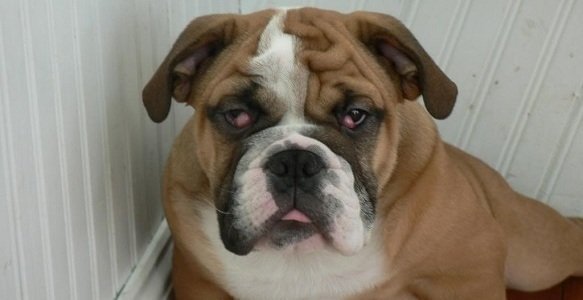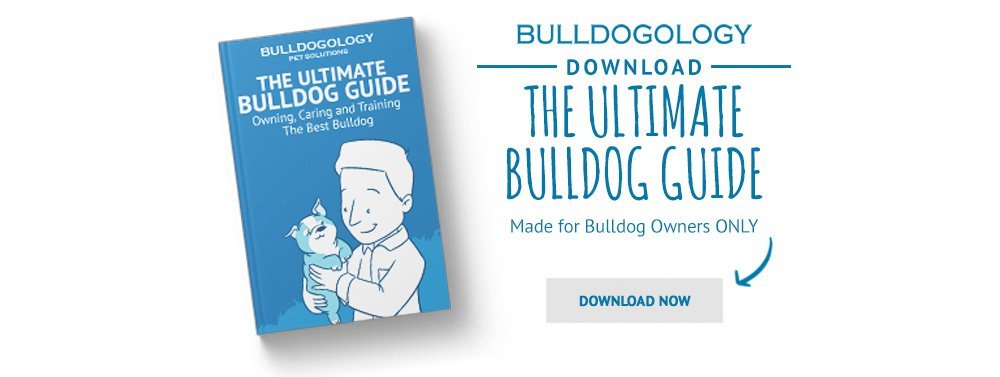Helpful Home Cures and Treatments for Fixing Bulldog Cherry Eye

Image courtesy of kimrisa’s PhotoBucket
Certain health conditions in dogs can be particularly alarming for owners of bullies simply by how they look. One notable example is the bulldog cherry eye, a relatively prevalent eye disorder among dogs.
Some breeds of bulldog are known to be fairly susceptible to the condition. It’s one of the better-known bulldog eye problems.
Cherry eye in bulldogs, especially French Bulldog cherry eye and English Bulldog cherry eye tends to occur in younger dogs up to two years of age.
In this post, you can learn about some handy tips and methods to treat bulldog cherry eye at home as well as common medical treatments.
But first, given how bulldog eye issues tend to be frequent, let’s understand the nature of the problem so have a fair idea of what you’re doing.
What Causes Bulldog Cherry Eye?
So the question is, what causes cherry eye in dogs?
To put it plainly, it’s a condition that involves prolapse or protrusion of a part of a dog’s third eyelid.
The third eyelid is a gland that provides nutrients and oxygen to a dog’s eyes through the production of tears.
This tear gland normally functions while it’s hidden away near the corner of the eye.
So what bulldog cherry eye basically refers to is the visible gland when it’s exposed due to stretching, detachment or other problems in the tissue that fixes it out of sight.
This can happen due to a variety of reasons – from plain genetic susceptibility to infections, and even stress or trauma.
It can be really unpleasant to look at as a reddish-pink mass protruding from the corner of your puppy’s eyes.
Usually, cherry eyes aren’t painful for your dog.
However, it can easily lead to eye infection in dogs, and those can be quite uncomfortable for your pooch.
And when the condition affects one eye, you may expect the other eye to get it as well within a few months.
Apart from the unsightliness, other symptoms of bulldog cherry eye may include:
- Dog eye infection due to poor tear production that protects the eyes from foreign matter
- Swelling
- Dog eye discharge
- Irritation of the eyes and discomfort
- Dog eye “boogers” from the collecting dirt and grime
- Dry eyes
How to Get Rid of and Fix Dog Cherry Eye
1. Home Remedies for Treatment and Prevention for Clear Bulldog Eyes
Although home cures seem like the most ideal way to go about fixing your bulldog’s cherry eye, do get a consult from your vet before diving in.
While home treatments may not always be as effective as having your bully operated upon, they’re safe and ideal as precautionary methods.
And to say the least, they’re simple and cost-effective too:
- Simply get your dog into his calmest, most relaxed state by petting him, rubbing him down or using any other method that works for him. Get him to lie down, close his eyes and totally relax for several minutes.
- Use a warm, damp cloth to very gently massage his eye where the protrusion is to stimulate tear production. You can also use tear drops to help the process along.
- After using the warm cloth for a bit, again very lightly massage his eye towards the inner corner to help the gland ease back into place.
Note that for some dogs, a cold cloth, wrapped around ice works better. Just make sure the ice is smooth and doesn’t hurt the eye or come in contact with it.
Also, this method often isn’t a permanent solution. And if the gland is detached and not merely out of place, it will need corrective surgery as a solution.
2. When to Decide on Cherry Eye Surgery for Your Bulldog
As mentioned earlier, the best advice is to consult your vet to get your bulldog’s cherry eye treated in the safest manner possible.
Dog cherry eye surgery is a fairly routine, and isn’t a major surgical procedure.
Cherry eye treatment without surgery may also be recommended by your vet, if they think your pup doesn’t need it.
These include using ointment or other medication to induce the gland back into its original position.
The Vet may also prescribe anti-inflammatory medication to deal with swelling and infection to reduce discomfort.
Cherry eye surgery usually involves one of two procedures which your vet may decide upon after diagnosis:
- Pushing or stitching the gland back into place
- Removing it altogether
The second option is not recommended nowadays due to the long-term problems it leads to.
As we mentioned before, the tears from the gland are essential for lubricating and protecting the eye.
So removing it altogether can lead to frequent conditions of “dry eye” and infections later on.
Besides, cherry eye surgery cost is probably no joke. Although they generally average around $600, they could easily swing up to $2,000 or more depending on various circumstances.
So best get all the details from a trusted vet and have a thorough diagnosis before deciding.
Hope you found these tips and suggestions for treating bulldog cherry eye useful. Looking for more bulldog tips? If you have any of your own that you found to be useful in treating your own pup, do let us know in the comments section below!
Do You Own a Bulldog?
Bulldogology loves Bulldogs, our free Bulldog guide is the essentials guide for your perfect Bulldog. Learn how to be the best way to be a proud owner of this awesome breed.
Made for current Bulldog owners and new bully owners!
With our Ultimate Bulldog Guide…
- Learn more about your Bulldog, and ready yourself for any health problems
- Why Bulldogs shed so much and what you should do
- What collars are best for Bulldogs and what NOT to get
- Got a hyper Bulldog? See section 8 of this guide on how to get your Bulldog to calm down
- What to do with those rosebud ears when your Bulldog needs cleaning
- How to feed your Bulldog and the best type of food for this breed
- And so much more!


Very helpful, thank your so much!!